Do you have a question about the ALIBI ALI-QVR3108H and is the answer not in the manual?
Key features of the ALIBI™ Embedded Video Recorder, including camera compatibility and encoding.
Live view capabilities, multi-screen display, and status icons.
Support for internal and network HDDs, SMART, and HDD sleeping.
Recording modes, parameters, event search, and playback functions.
Network connectivity, protocols, remote access, and firmware upgrade features.
Step-by-step guide for initial recorder configuration.
Setting up analog channels to work with IP cameras.
Configuring network interface settings like IP address and DNS.
Initializing and configuring hard disk drives for storage.
Setting motion detection parameters, areas, and schedules.
Setting up system-related alarm conditions and responses.
Configuring the detection of faces in video feeds.
Setting up virtual lines to detect objects crossing them.
Configuring virtual zones to detect objects entering them.
Searching recorded video for specific VCA events.
Procedures for powering on, shutting down, and restarting the QVR.
Configuring display output resolution for VGA and HDMI monitors.
Adjusting live view parameters like split, dwell time, and audio.
Accessing common functions via toolbar icons in live view.
Setting camera recording parameters for main and sub streams.
Defining daily recording schedules and holiday overrides.
Overview of video playback features including instant, time, and event search.
Exporting specific video clips by searching criteria.
Accessing and using the PTZ control interface.
Setting and saving specific camera positions for PTZ cameras.
Creating automated camera movement sequences using presets.
Creating new user profiles with specific permissions.
Configuring local, remote, and camera-specific access rights.
Basic network configuration, including DHCP and static IP settings.
Setting up Dynamic DNS for remote access to the QVR.
Setting up email notifications for alarms and events.
Preparing hard drives for use by the QVR.
Allocating storage space using partition or group modes.
Monitoring HDD health via SMART and bad sector detection.
Accessing, searching, and exporting system and event logs.
Backing up and restoring system configuration files.
Updating the device firmware via USB or FTP.
Accessing the QVR from a remote computer via browser.
Remote interface for viewing live video streams.
Remote interface for reviewing recorded video.
Remote interface for system configuration changes.
Key features of the ALIBI™ Embedded Video Recorder, including camera compatibility and encoding.
Live view capabilities, multi-screen display, and status icons.
Support for internal and network HDDs, SMART, and HDD sleeping.
Recording modes, parameters, event search, and playback functions.
Network connectivity, protocols, remote access, and firmware upgrade features.
Step-by-step guide for initial recorder configuration.
Setting up analog channels to work with IP cameras.
Configuring network interface settings like IP address and DNS.
Initializing and configuring hard disk drives for storage.
Setting motion detection parameters, areas, and schedules.
Setting up system-related alarm conditions and responses.
Configuring the detection of faces in video feeds.
Setting up virtual lines to detect objects crossing them.
Configuring virtual zones to detect objects entering them.
Searching recorded video for specific VCA events.
Procedures for powering on, shutting down, and restarting the QVR.
Configuring display output resolution for VGA and HDMI monitors.
Adjusting live view parameters like split, dwell time, and audio.
Accessing common functions via toolbar icons in live view.
Setting camera recording parameters for main and sub streams.
Defining daily recording schedules and holiday overrides.
Overview of video playback features including instant, time, and event search.
Exporting specific video clips by searching criteria.
Accessing and using the PTZ control interface.
Setting and saving specific camera positions for PTZ cameras.
Creating automated camera movement sequences using presets.
Creating new user profiles with specific permissions.
Configuring local, remote, and camera-specific access rights.
Basic network configuration, including DHCP and static IP settings.
Setting up Dynamic DNS for remote access to the QVR.
Setting up email notifications for alarms and events.
Preparing hard drives for use by the QVR.
Allocating storage space using partition or group modes.
Monitoring HDD health via SMART and bad sector detection.
Accessing, searching, and exporting system and event logs.
Backing up and restoring system configuration files.
Updating the device firmware via USB or FTP.
Accessing the QVR from a remote computer via browser.
Remote interface for viewing live video streams.
Remote interface for reviewing recorded video.
Remote interface for system configuration changes.
| Recording Resolution | Up to 1080p |
|---|---|
| Hard Drive Support | 1 SATA HDD |
| Maximum Internal Capacity | Up to 6TB |
| Compression Format | H.264 |
| Power Supply | 12V DC |
| Audio Input | 1 RCA |
| Audio Output | 1 RCA |
| Operating System | Embedded Linux |
| Channels | 8 |
| Video Inputs | 8 |
| Video Output | 1x HDMI, 1x VGA |
| Network Interface | RJ-45 port (10/100 Mbps) |
| USB Interface | 2 USB 2.0 |
| Operating Temperature | -10°C to +55°C |
| Dimensions | 45mm |
| Weight | 1 kg |
| Video Input | BNC |
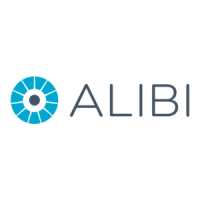





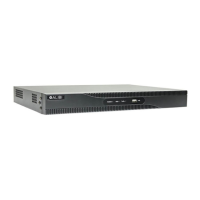

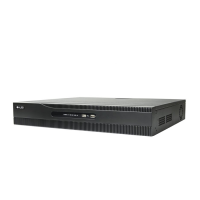

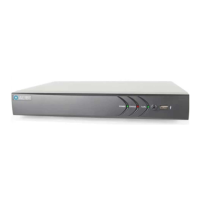
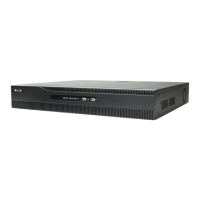
